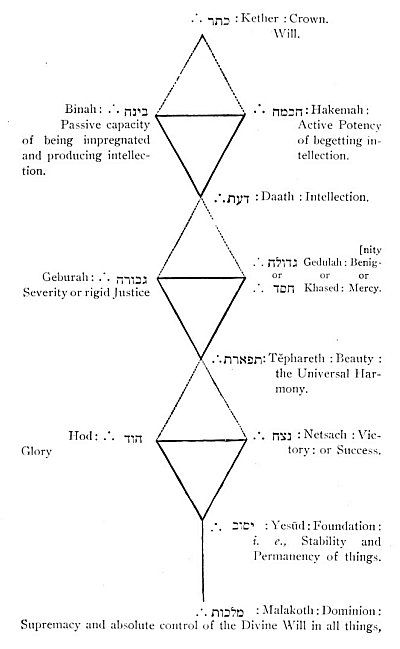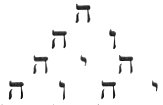There are also two symbols in the Third Degree, which, with the 3 in the first, and 2 in the second, make the 7.
6th. The candidate, after passing through the first part of the ceremony, imagines himself a Master; and is surprised to be informed that as yet he is not, and that it is uncertain whether he ever will be. He is told of a difficult and dangerous path yet to be travelled, and is advised that upon that journey it depends whether he will become a Master. This is symbolical of that which our Saviour said to Nicodemus, that, notwithstanding his morals might be beyond reproach, he could not enter the Kingdom of Heaven unless he were born again; symbolically dying, and again entering the world regenerate, like a spotless infant.
7th. The murder of Hiram, his burial, and his being raised again by the Master, are symbols, both of the death, burial, and resurrection of the Redeemer; and of the death and burial in sins of the natural man, and his being raised again to a new life, or born again, by the direct action of the Redeemer; after Morality (symbolized by the Entered Apprentice’s grip), and Philosophy (symbolized by the grip of the Fellow-Craft), had failed to raise
p. 641
him. That of the Lion of the House of Judah is the strong grip, never to be broken, with which Christ, of the royal line of that House, has clasped to Himself the whole human race, and embraces them in His wide arms as closely and affectionately as brethren embrace each other on the five points of fellowship.
As Entered Apprentices and Fellow-Crafts, Masons are taught to imitate the laudable example of those Masons who labored at the building of King Solomon’s Temple; and to plant firmly and deep in their hearts those foundation-stones of principle, truth, justice, temperance, fortitude, prudence, and charity, on which to erect that Christian character which all the storms of misfortune and all the powers and temptations of Hell shall not prevail against; those feelings and noble affections which are the most proper homage that can be paid to the Grand Architect and Great Father of the Universe, and which make the heart a living temple builded to Him: when the unruly passions are made to submit to rule and measurement, and their excesses are struck off with the gavel of self-restraint; and when every action and every principle is accurately corrected and adjusted by the square of wisdom, the level of humility, and the plumb of justice.
The two columns, Jachin and Boaz, are the symbols of that profound faith and implicit trust in God and the Redeemer that are the Christian’s strength; and of those good works by which alone that faith can be established and made operative and effectual to salvation.
The three pillars that support the Lodge are symbols of a Christian’s HOPE; in a future state of happiness; FAITH in the promises and the divine character and mission of the Redeemer; and CHARITABLE JUDGMENT of other men.
The three murderers of Khir-Om symbolize Pontius Pilate, Caiaphas the High-Priest, and Judas Iscariot: and the three blows given him are the betrayal by the last, the refusal of Roman protection by Pilate, and the condemnation by the High-Priest. They also symbolize the blow on the ear, the scourging, and the crown of thorns. The twelve fellow-crafts sent in search of the body are the twelve disciples, in doubt whether to believe that the Redeemer would rise from the dead.
The Master’s word, supposed to be lost, symbolizes the Christian faith and religion, supposed to have been crushed and destroyed when the Saviour was crucified, after Iscariot had betrayed Him,
p. 642
and Peter deserted Him, and when the other disciples doubted whether He would arise from the dead; but which rose from His tomb and flowed rapidly over the civilized world; and so that which was supposed to be lost was found. It symbolizes also the Saviour Himself; the WORD that was in the beginning–that was with God, and that was God; the Word of life, that was made flesh and dwelt among us, and was supposed to be lost, while He lay in the tomb, for three days, and His disciples “as yet knew not the scripture that He must rise again from the dead,” and doubted when they heard of it, and were amazed and frightened and still doubted when He appeared among them.

Moe is the founder of GnosticWarrior.com. He is a father, husband, author, martial arts black belt, and an expert in Gnosticism, the occult, and esotericism.





